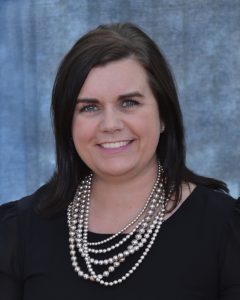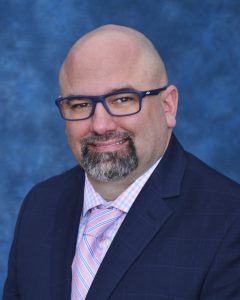Policy Priority Q&A with the Ohio Soybean Association
March 22, 2019 Ohio Soybean Association
Emilie Regula Hancock, OSA Membership and Policy Coordinator

Q: Why is it important for an organization like OSA to have policy priorities?
Emilie: Prioritizing policies sets the tone for the year, gives clear direction for where the organization is going and how it will represent its members. There are so many different areas that we could focus on but sitting down and really thinking about what can be done in a year helps us be more effective, by choosing what we really want to support or oppose. More than 500 bills can be introduced during one legislative cycle, so narrowing the scope gives us direction.
Q: How does the board come up with its policy priorities?
Emilie: The OSA policy committee meets and reviews last year’s priorities to evaluate what was accomplished and what still needs work. They also consider other things that may have been an issue in the past that they can work on in the upcoming year. The committee members reflect on what OSA members have faced the past year and ways that it can be improved. They discuss the priorities as a committee, then once the committee is okay with these, they are approved by the full board. OSA staff worked to implement this directive by monitoring and tracking legislation that’s introduced and as it makes its way through the legislative process.
Q: What events in 2018 helped shape the priorities for 2019?
Emilie: 2018 was a tough year for Ohio’s soybean farmers in many ways, with challenges like tariffs and the threat of new regulations on farmers without farmer input. The good news is that it seems like leaders in both the legislative and executive branches are ready to work with farmers to resolve these issues in 2019. While both water quality and trade continue to be top priorities for OSA, we’re also looking forward to working on issues like increased broadband access and bridge and road maintenance.
Q: What effect does a new administration have on OSA’s priorities?
Emilie: A new administration affects what issues we work on and how we tackle each one. A new administration brings its own new priorities and style of leadership. Governor DeWine has made it clear that working with agriculture on the water quality issue will be a priority for him and his staff, along with the issue of rural broadband.
Trish Cunningham, OSA Policy Committee Chair

Q: Going into planning the new policy priorities, what were some issues you wanted to make sure to address in 2019?
Trish: Water quality is our top priority and making sure that we are working on behalf of Ohio’s soybean farmers to ensure that we are represented in the discussions. Rural broadband is another top priority for not only us but also the legislature. This is a budget year, so we will certainly be engaged in making sure our most important issues are funded appropriately.
Q: What priorities are you most excited to work on this year?
Trish: I am most excited to work on establishing fuel quality standards to protect consumers from unknowingly purchasing substandard fuel to maintain the integrity of the fuel supply and protect the reputation of biodiesel as a high-quality, high-performing fuel. Ohio is one of only three states in the country that do not have a fuel standard. It is important for Ohio consumers to know what is in the fuel they are putting in their vehicles. Along with establishing a fuel standard for the state, it allows us to further continue to pursue increasing the use of biodiesel in Ohio, which is an exciting way to increase soybean usage in Ohio while adding value to a bushel of soybeans.
Q: How has the new administration shaped what OSA will do in the upcoming year?
Trish: It is always an exciting but challenging time with the changing of an administration, but we are looking forward to working with Governor DeWine and his team on our priority issues. We have worked to build a strong relationship with the administration, including Ohio Department of Agriculture Director, Dorothy Pelanda.
Q: How do you see rural development and job/economic development playing a role in OSA’s plan for 2019?
Trish: Our rural communities are losing population. Young people are leaving rural areas for different opportunities in more urban areas. In order to continue to have our farms and rural agribusiness thrive, we need to invest in our communities. Rural broadband, supporting trade and vocational education and to have access to energy and infrastructure are all ways that will help our rural areas remain viable for the future.
Scott Metzger, OSA President

Q: How did the events of 2018 help shape 2019 policies?
Scott: When former Governor Kasich tried to create an executive order for water quality issues, it really made all the commodity groups come together and set priorities with one common goal. The 2019 election also featured talks about rural broadband and economic development, so those two topics went to the top of the priority list.
Q: What priorities are you most excited about?
Scott: Water quality would be at the top of the list for me, followed closely by getting a fuel quality standard funded. With the new administration coming in, it will be imperative that we are all on the same page in the ag community with issues regarding water quality. We need to make sure that we are representing the Ohio soybean farmers at the table.
Fuel quality standards have always been an issue for Ohio. We actually have language for it, but there has never been any funding mechanism in place to put it to work. Having a new administration may help make this possible and open up some more opportunity for biodiesel.
Q: How has the administration helped shape what OSA will do in the upcoming year?
Scott: Knowing the main issues that they want to focus on made it easy to come up with our policy priorities. The DeWine administration wants to get legislation done on water quality and get the process started pretty quickly. Rural broadband and economic development can also have a great impact on making agriculture better in Ohio.
Q: Why is rural broadband important for ohio?
Scott: We need rural broadband in Ohio so we can try to keep the younger population in the rural areas. By investing in rural areas, we can make sure our rural areas play an important role in the future with infrastructure and energy.
You can read the Ohio Soybean Association’s new 2019 Policy Priorities here.
Article Tags: Magazine | Ohio Soybean Association News | Ohio Soybean News
